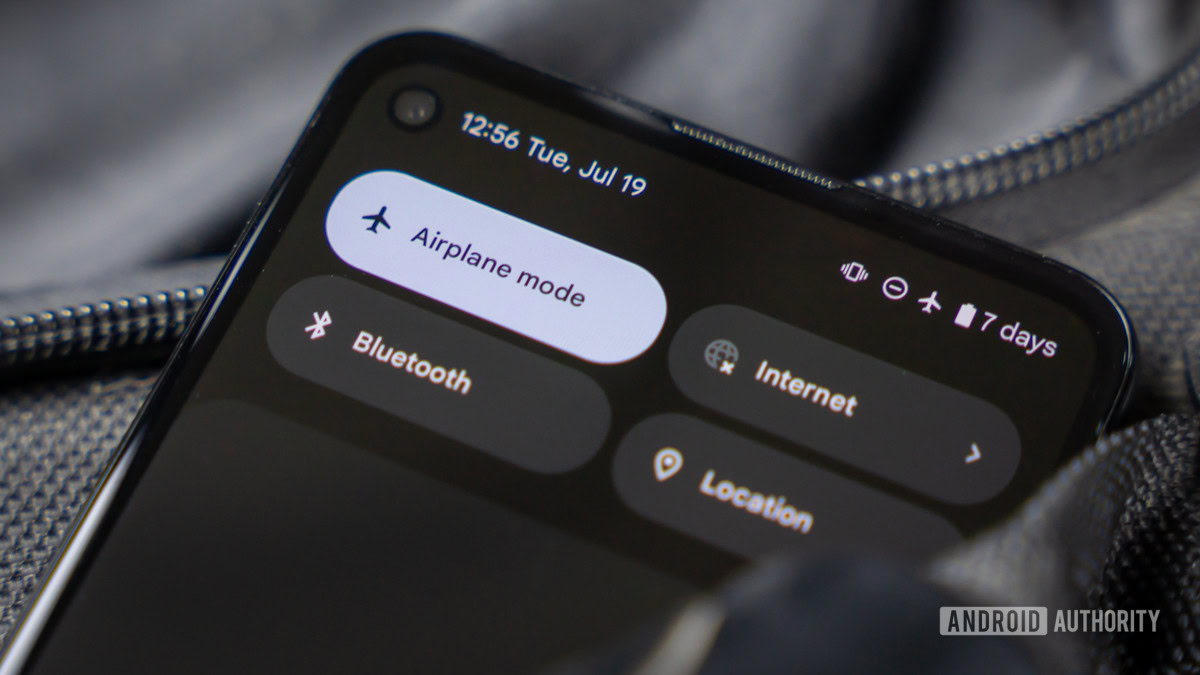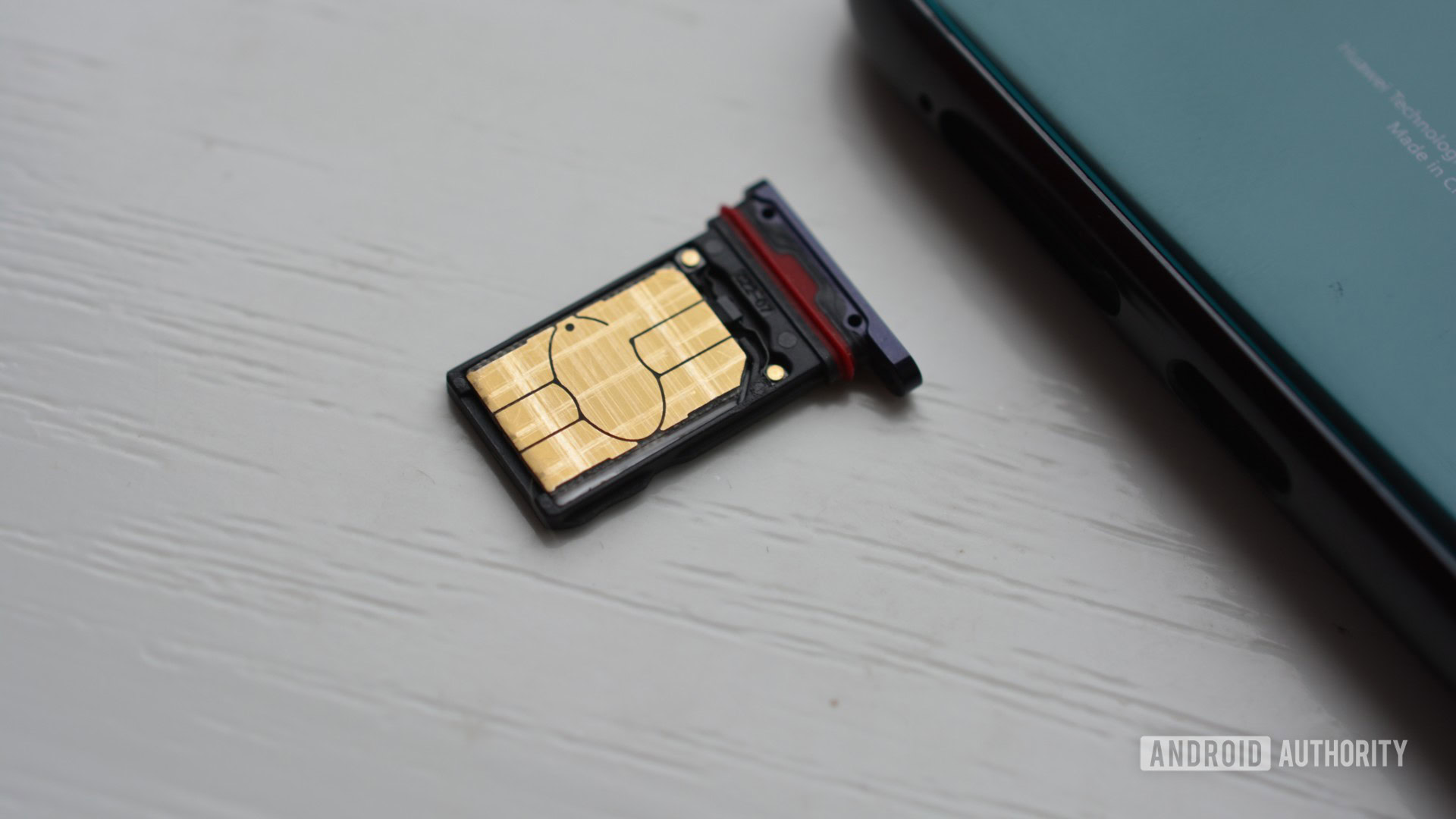Affiliate links on Android Authority may earn us a commission. Learn more.
Android mobile data not working? Here are some solutions

Our smartphones are essential tiny pocket computers, but they’ve become so convenient we almost can’t live without them anymore. An internet connection is the backbone of the smartphone experience, so whenever data stops working, the world seems to come to a halt. What do you do to get back on the grid? You might be facing a cellular data issue. Here are some solutions to restore mobile data.
QUICK ANSWER
If your Android mobile data is not working, the first fixes you should try are restarting the phone, checking if Airplane mode is on, inspecting the SIM card, and checking your mobile plan details. If those methods don't work, you can move on to more complex solutions, which we will cover below.
JUMP TO KEY SECTIONS
Editor’s note: Some of the instructions in this article were generated using a Google Pixel 7 running Android 14. Keep in mind that steps can be slightly different depending on your device.
See if Airplane mode is on

Airplane mode turns off all wireless antennas, including mobile data, Wi-Fi, and Bluetooth. It’s common to turn it on accidentally (or at least it happens to me all the time!). Go ahead and check if this happened to you. There’s often a toggle in the notification area’s quick settings, but you can also do it in the settings.
How to turn Airplane mode on/off:
- Open the Settings app.
- Go into Network & internet.
- Look for Airplane mode. There will be a toggle next to it. Tap on it to turn it on or off.
Furthermore, turning airplane mode on and off can reset settings and bring everything back to normal. If your phone wasn’t in Airplane mode, then go ahead and turn the feature on and off and see if that gets your data working again.
Have you tried rebooting?
As unexplainable as it may be, we find most smartphone issues are fixed with a simple reboot. A plethora of possible discrepancies could cause your mobile data problem, and chances are that if you are here looking for answers, your phone complication is a bit more complex, but it doesn’t hurt to remind you to try the good ol’ restart. It just might work.
How to restart an Android phone:
- Press the side and volume up buttons simultaneously.
- Tap on Restart to reboot your device.
Check your plan?
Some mobile data plans have limitations and throttles. Look into your plan’s terms and see if you’ve used more data than you should. You might be capped or throttled. You can also check data usage on your Android phone in a few steps. Also, consider the fact you may be late on your payment. Even the best of us forget about bills sometimes. Not to mention, sometimes cards get declined for no apparent reason. If you need some help finding the right plan, we have a list of our favorite ones.
Inspect your SIM card

SIM cards can move around, and sometimes pins get out of line, causing mobile data to stop working, as well as a “No SIM card” error on occasion. It’s a good idea to play with the SIM card a bit if the steps above don’t work for you. Pull it out and reinsert it. Maybe try to clean it a bit. It won’t hurt to try! It’s an excellent way to try to get mobile data working again.
Is it Google?
If Google applications, specifically, aren’t working on mobile data, there is a slight chance it is something related to the Search Giant. Try these steps to see if it all goes back to normal.
Clear the cache from the Google Play Services app:
- Open the Settings app.
- Go into Apps.
- Select See all apps.
- Find and go into Google Play Services.
- Access Storage & cache.
- Hit Clear cache.
Look for system updates:
- Open the Settings app.
- Go into System.
- Select System Update.
- Tap on Check for update.
- The system will let you know if there is an available update. Follow the instructions to install it.
Remove and re-add your Google account:
- Open the Settings app.
- Go into Passwords & accounts.
- Tap on your Google account.
- Hit Remove account.
- Confirm by hitting Remove account.
- Go back to Passwords & accounts and select Add account to re-add it.
Outages and reception
Are you out in the middle of nature? Maybe you’re in a concrete building. Or you’re simply going through an area with spotty reception. There is always a chance you’re unreachable to the network, which will cause problems with your mobile data.
If you’re always having problems with signal in a common location, like a room, your office, or any place you frequent, you might want to invest in a signal booster like the weBoost Home Studio Omni ($349.99 at Amazon).
Also, consider that, while rare, carrier networks can go down, too, causing service outages. We recommend DownDetector.com to check when services are down. The website collects consumer reports and lets you know if there is an outage. There’s also a live map to see if the problem is local. Go in there, type in your carrier, and hit the search button. If the network is down, all you can do is wait.
Reset the APN
Your APN is how your phone connects with your mobile carrier’s network. Think of it as a Wi-Fi password for mobile data, but much more complicated, with IP settings, gateway details, and more.
How to reset APN settings:
- Open the Settings app.
- Go into Network & internet.
- Go into SIMs.
- Tap on your SIM.
- Scroll to the bottom and select Access Point Names.
- Tap on the three-dot menu button on the top-right.
- Select Reset to default.
Reset network settings
If none of the options above work, it may mean some extraneous setting was changed along the way. It is likely related to the network, so resetting your network settings to factory defaults might fix the issue.
How to reset network settings:
- Open the Settings app.
- Select System.
- Go into Reset options.
- Hit Reset Mobile Network Settings. You can also opt to Reset Bluetooth & Wi-Fi.
- Tap on Reset settings.
- Enter your PIN and hit Reset settings again.
Factory data reset
If all else fails to restore mobile data, go ahead and perform a factory data reset. This will erase everything on your phone and bring all settings to factory defaults. This means your phone will be left like the first time you turned it on (software-wise).
This fixes pretty much any software issue you may encounter. It is the best solution to many problems, but it should be used as a last resort due to the inconveniences deleting all data entails.
How to factory reset your Android phone:
- Open the Settings app.
- Select System.
- Go into Reset options.
- Hit Erase all data (factory reset).
- Tap on Erase all data.
- Confirm by selecting Erase all data again.
- Enter your PIN and hit Erase all data again.
Seek professional help
Now, if none of these tips do the trick, you probably need to have a professional personally inspect the device. It could be a hardware problem at this point. Reach out to your phone manufacturer to claim the warranty, if the device is still covered. You can also reach out to your carrier, or even Google. It might also be time to contact your insurance provider if you have a policy.
FAQs
There are multiple reasons why your hotspot may not be working even if your mobile data is. The most common one is that your carrier may be limiting hotspot functionality. Not all plans allow the use of the hotspot feature. You should also check that any battery-saving mode is off. Even something like a VPN may be causing issues with your hotspot, so make sure to turn it off, if you use one.
Again, not all plans allow hotspot tethering. Ideally, the carrier will simply block off the setting when this is the case, but there is also a chance you can turn it on and it will simply not work. Another common cause for this is having a low signal. Just because your device can offer a Wi-Fi connection, it doesn’t mean its internet and signal are healthy enough to get your devices connected.
There are multiple reasons why your phone may be having trouble connecting to the carrier network. The most obvious one is that there simply may not be coverage where you are. If your carrier allows for roaming, you can try turning it on. Also, ensure your mobile data is on, Airplane mode is turned off, and your APN settings are correct.
If your LTE isn’t working, there is a chance you are in an area with no LTE coverage, or the network itself is down temporarily. Otherwise, you can ensure LTE is on in the settings. Go to Settings > Network & internet > SIMs > select your SIM > Preferred network type, and select LTE or 5G. If you choose 5G, the phone will automatically go to LTE when there is no 5G coverage.
Sometimes Spectrum Mobile data just stops working for unknown reasons. Even the company knows this, and it recommends a few troubleshooting tips. These include restarting the device, making sure you’re in an area with coverage, making sure cellular data is turned on, and ensuring Airplane mode is off. If you’re using an iPhone, you will also need at least iOS 14.
US Cellular users sometimes run across data issues, and the most successful troubleshooting tips are usually the same as the ones we covered in this guide. These include ensuring you’re in an area with coverage, ensuring Airplane mode is off, updating the devices, checking if the SIM card is well placed, checking if mobile data is turned on, and restarting the device.
There is a chance your phone has hardware problems, in which case the problem is more severe, and there isn’t much we can do to help you. Check if your phone is still under warranty. If it isn’t and you would rather not have it repaired, we have lists of great Android phones and budget devices to replace your broken handset.